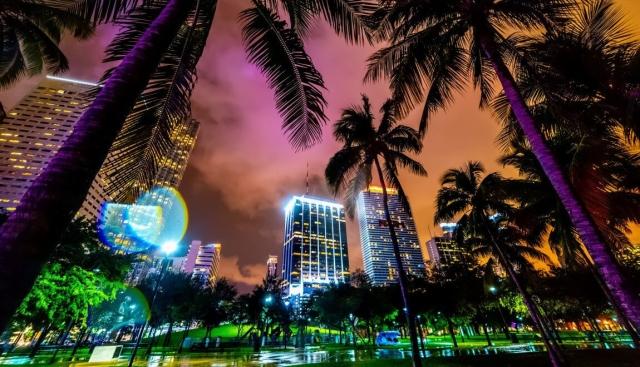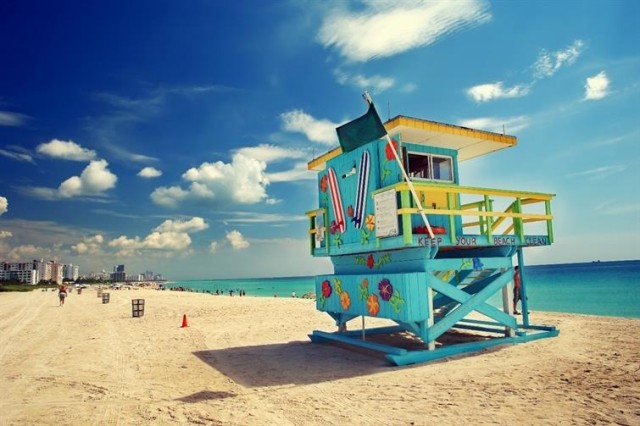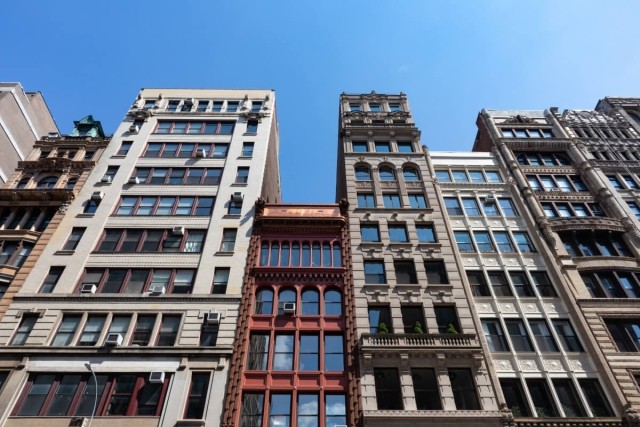Welcome to Miami, Florida, the Magic City. Chances are, if you’re considering moving to Miami, you’ve heard mixed reviews of the 305. If you’re looking for honest opinions, best kept secrets, and tips and tricks to navigating the city, who better to ask than the people who live here?
We asked a group of Miami residents what city newcomers should know, from weather and recreation to traffic jams and affordability. So buckle up and take notes – the reviews are in. According to the locals themselves, here are 12 things you need to know about living in Miami.
1. Is Miami a good place to live?
With around 440,000 residents packed into the city proper and 6.14 million throughout the metro area, it’s safe to say the city upholds its lively reputation. As one of the cities in the state of Florida, Miami’s 55 square miles are a hub of bustling night life, fine dining, and professional opportunity.
2. What is the weather like in Miami?
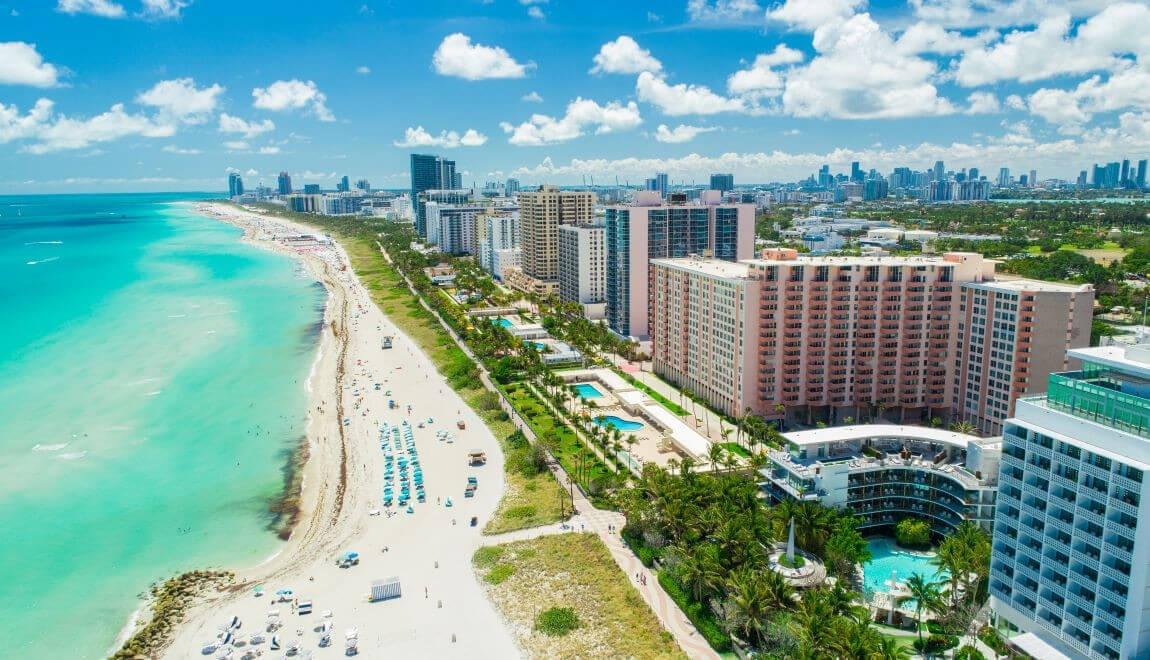
Three words: year-round weather.
If there’s one thing our locals made clear, it’s that Miami’s weather cannot be beat. Residents boast about sunny warmth throughout the day and tropical, breezy nights no matter the season. The weather makes it perfect for a day at the beach or at your apartment's rooftop pool. This city is revered as a year-round travel destination as its average yearly temperature hovers around 77 degrees Fahrenheit. While summer months may creep into the mid 90s, fall, winter, and spring remain beautifully temperate.
"[Miami has] the best weather all year. [It’s] beautiful every day.”
3. Does Miami have good public transportation?
While we’d love to boast about Miami’s world-class transit, not every city can be New York. To be blunt, the best and most reliable way to get around Miami is by car, since attractions and restaurants tend to be pretty spaced out. Roads are car-friendly, and parking is actually quite convenient!
If you’d rather commute via public transportation, Miami offers several options! The city is connected by the Metrorail, Metromover, and Metrobus systems, offering residents and visitors easy ways to get around. The Metrorail covers various neighborhoods, while the Metromover provides a free and efficient way to travel downtown. Fares and fees may apply where applicable. It may take a while to learn your way around the city, but with enough time, Miami’s public transit will become your ticket out of traffic.
4. Is it expensive to live in Miami?
Look. Sun, sand, surf, warm weather, and world-class food come at a cost. Yes, Miami is expensive, and it’d be disingenuous to say otherwise. One bedroom rent in Miami averages $2,026 per month, and the cost of living is 21% higher than the national average. However, residents are firm that no matter your budget, you can find a place that works for you: “Don’t give up on trying to find affordable housing. It IS out there.”
As in all cities, factors like location, amenities, and size play a significant role in rental prices. Apartments in the downtown area will most likely cost more than rentals in outlying suburbs. To make the most of your housing budget, assess your priorities.
If you absolutely must live downtown, you may choose to forego luxury amenities or extra square footage to save some money. However, if your must-haves include hardwood floors or an on-site gym, you may be alright searching on the city outskirts.
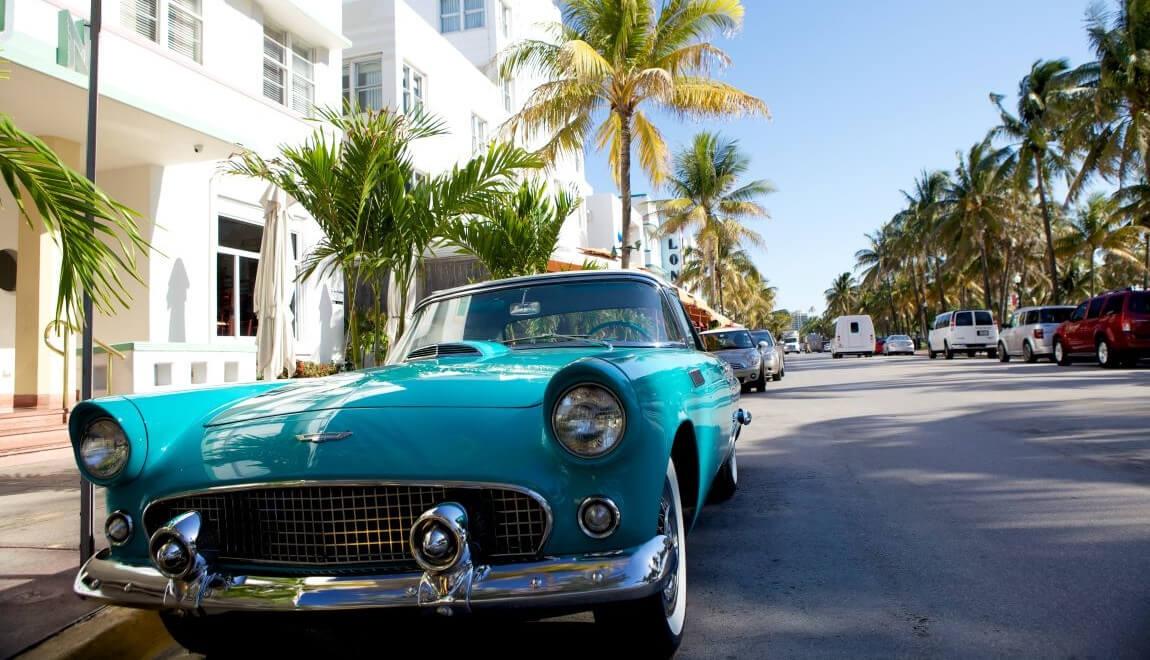
5. Who’s moving to Miami?
There’s no denying that Florida’s busiest city is bustling with opportunity. The metro area has seen a population growth of over 2.32% since 2020, and it’s not slowing down. From creative industries to tourism and healthcare, Miami offers a ton of job openings. The city's diverse communities, coastal charm, and tropical appeal make it a coveted spot for renters.
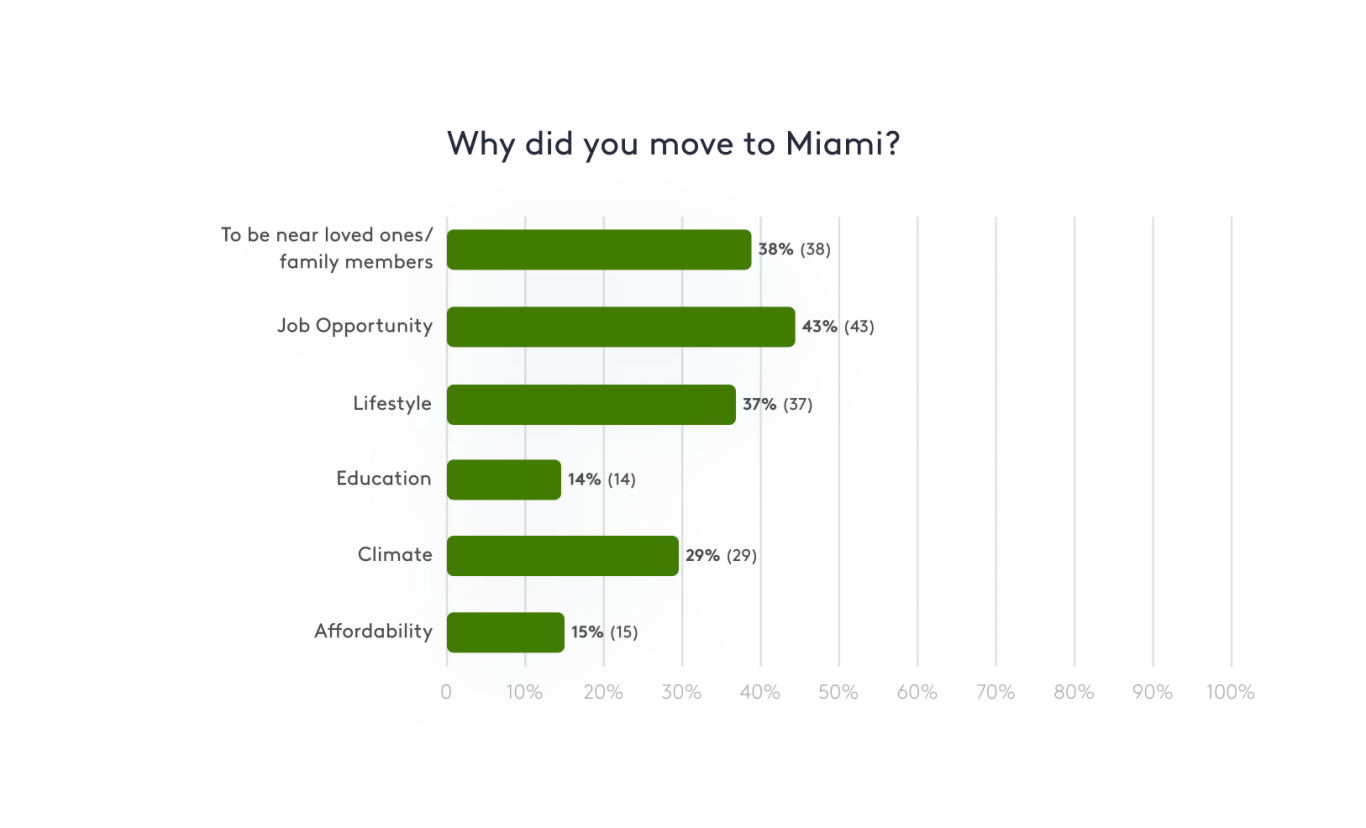
Just under half of all respondents indicated that they relocated for a job opportunity. Considering that the unemployment rate is just 2.10% as of June 2023, we’re not surprised. The city thrives off industries from food and hospitality to healthcare and education.
Moving closer to friends and family comes in second place for reasons renters relocated. Other top contenders include city lifestyle and Miami’s tropical climate.
6. What is there to do in Miami?
In a city with so much to do, it can be overwhelming to even know where to start. Online recommendations turn into pages and pages of restaurants, shops, and events that you’ll never be able to remember. Instead of scrolling endlessly into a rabbit hole of reviews, start by listening to the people who have already experienced the city’s best. Here are the top places to visit in the city, vetted by Miami locals.
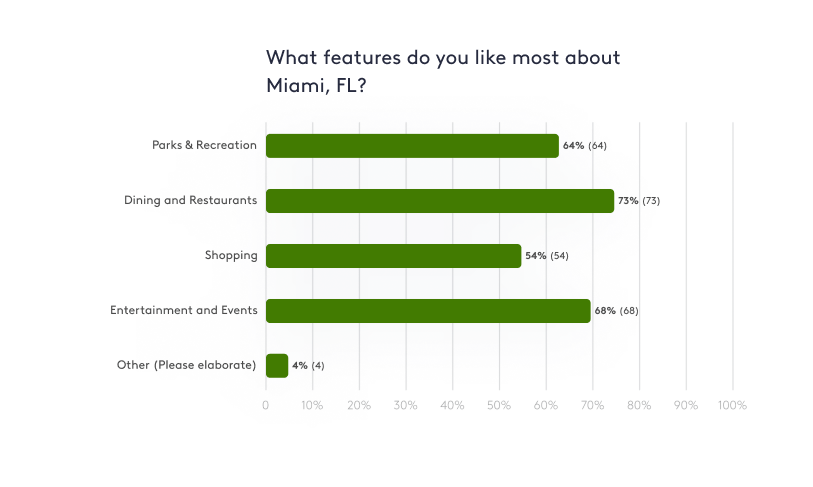
7. Parks and Recreation
Sprinkled among busy streets and downtown skyscrapers, Miami features numerous parks and green spaces for relaxation and recreation. Iconic spots like South Pointe Park and Bayfront Park offer stunning views of the ocean and cityscape. Residents also enjoy the expansive Oleta River State Park, the largest urban park in Florida, providing opportunities for biking, kayaking, and picnicking.
“Bayfront Park, located almost at the heart of downtown-next to Kaseya Arena Center, is a famous & popular park destination. It has multiple activities to do throughout the week. Many major free events are held there not only for the enjoyment of tourists but for locals too.”
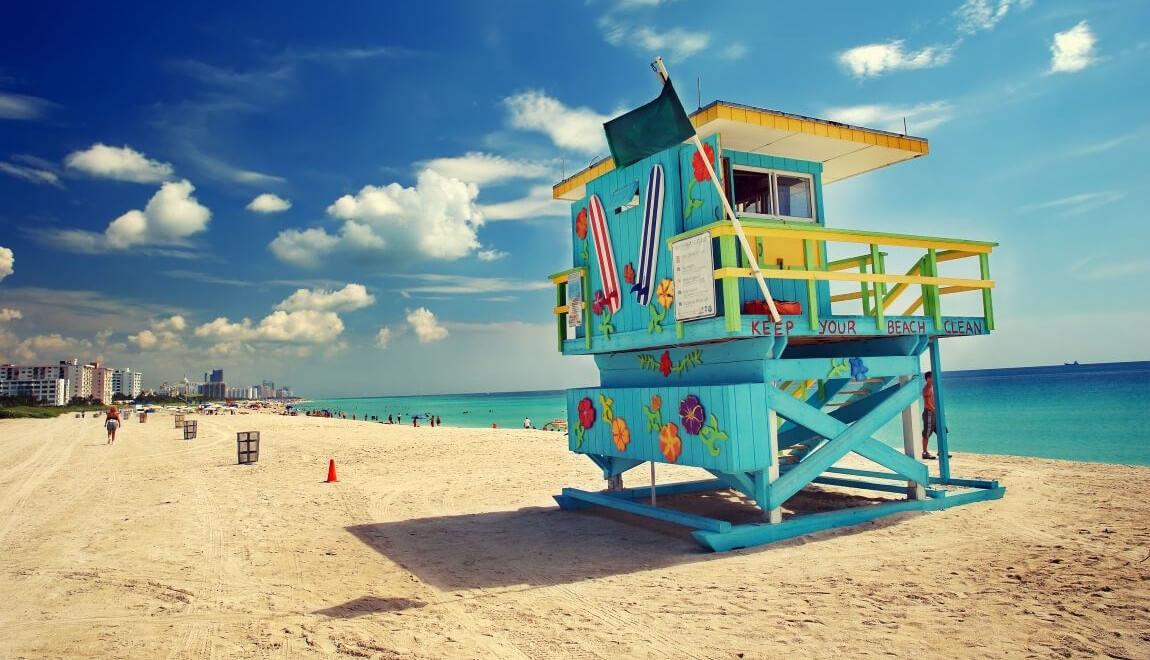
8. Dining and Restaurants
Miami's culinary scene is just as diverse as its population. From renowned Cuban eateries in Little Havana to upscale dining in the Design District, there's no shortage of flavors to explore. Local favorites include the vibrant Latin flavors of Versailles (“The world's most famous Cuban restaurant”) and the seafood delicacies of Joe's Stone Crab, only open October-May. With over 10,000 restaurants in the Miami area, you’ll never run out of options.
“The dining and restaurants in Miami are like a trip around the world in itself. Some of the best Cuban food, Jamaican Food, Mediterranean cuisine and even French food can all be found right here.”
9. Shopping
From high-end boutiques in the Design District to the bustling Miami International Mall, shoppers can find everything from luxury brands to unique local finds. Residents recommend exploring the Wynwood Arts District for art galleries, boutiques, and one-of-a-kind fashion.
10. Entertainment and Events
Miami’s nightlife and cultural activities offer endless entertainment. The city hosts major music festivals like Ultra Music Festival and III Points, drawing music fans from around the world. Calle Ocho is another famous music festival that takes place in Little Havana and serves as the peak of Carnival Miami. The Wynwood Walls, an outdoor art gallery, showcases stunning street art, while the Adrienne Arsht Center hosts theater, ballet, and opera performances.
“Miami has a lot of great events every year, such as Art Basel and Ultra Music Festival.”
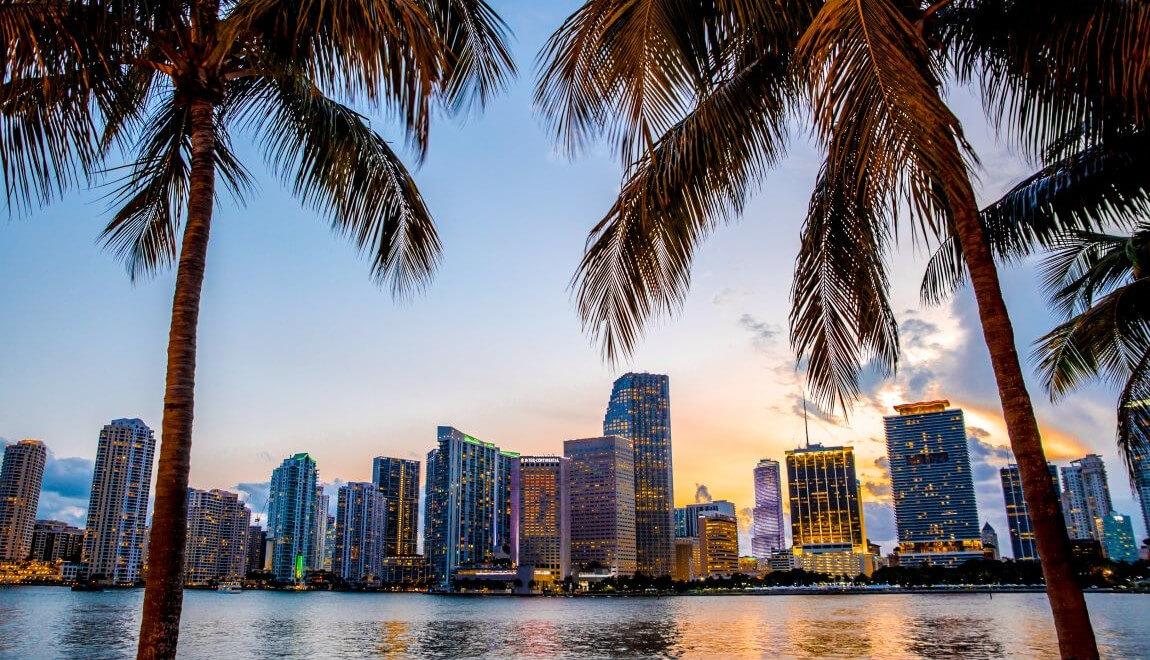
11. What are the pros and cons of living in Miami?
Con: “Traffic is the worst.”
We saw this one from miles away. Thousands of people in such a busy city can lead to packed roads, slow commutes, and a ten-minute wait just to get through your first stoplight on the way home. Anyone who lives in or around Miami knows that rush hour traffic can get a little crazy. While there is unfortunately no way to avoid it entirely, you can make your daily commute a little more tolerable.
The easiest fix may be the most obvious: factor extra time into your travel plans. One local says, "Leave at least two hours ahead of your appointment to make it on time." Unless you anticipate miles of bumper-to-bumper traffic, you don't need to leave hours in advance.
A simple way to arrive on time is to add 20% of your travel time to your estimated commute or 55% during peak traffic hours. For example, you should plan for an hour-long commute to take an hour and fifteen minutes during the middle of the day. If you are leaving during rush hour at 5 pm, plan for your trip to take over an hour and a half.
Con: “[You have to] be hurricane ready.”
If you've been watching the news recently, this shouldn’t come as a surprise. Living in Miami means being prepared for hurricane season, which typically spans from June to November. While the city is well-equipped to handle such situations, residents need to stay vigilant, stay informed about weather forecasts, and ensure they have necessary supplies in case of emergencies.
Pro: “[Miami] is a melting pot of cultures.”
Miami’s cultural blend is a major plus for its residents. Between food, shopping, activities, and community, locals get to experience something new every day. With a strong Latin influence and a mix of diverse international communities, the city is a hub of cultural festivals, authentic cuisines, and distinct neighborhoods to explore.
Pro: “The beach is within 20 minutes no matter where you are.”
One of the undeniable perks of living in Miami is living right next to the beach. Whether you're in the heart of the city or its outskirts, you're never more than a few minutes away from the stunning coastline. Residents can easily enjoy beach and water activities year-round. Favorite local beaches include Crandon Park Beach, North Beach Oceanside Park, and Haulover Beach, which offers a laid-back experience.
12. How long are people staying in Miami?
Major cities can often feel like a transient space. People pass through on their way to different opportunities, or they leave for a more subdued location to settle down. Despite Miami’s youthful atmosphere, many renters see the city as their long-term home:
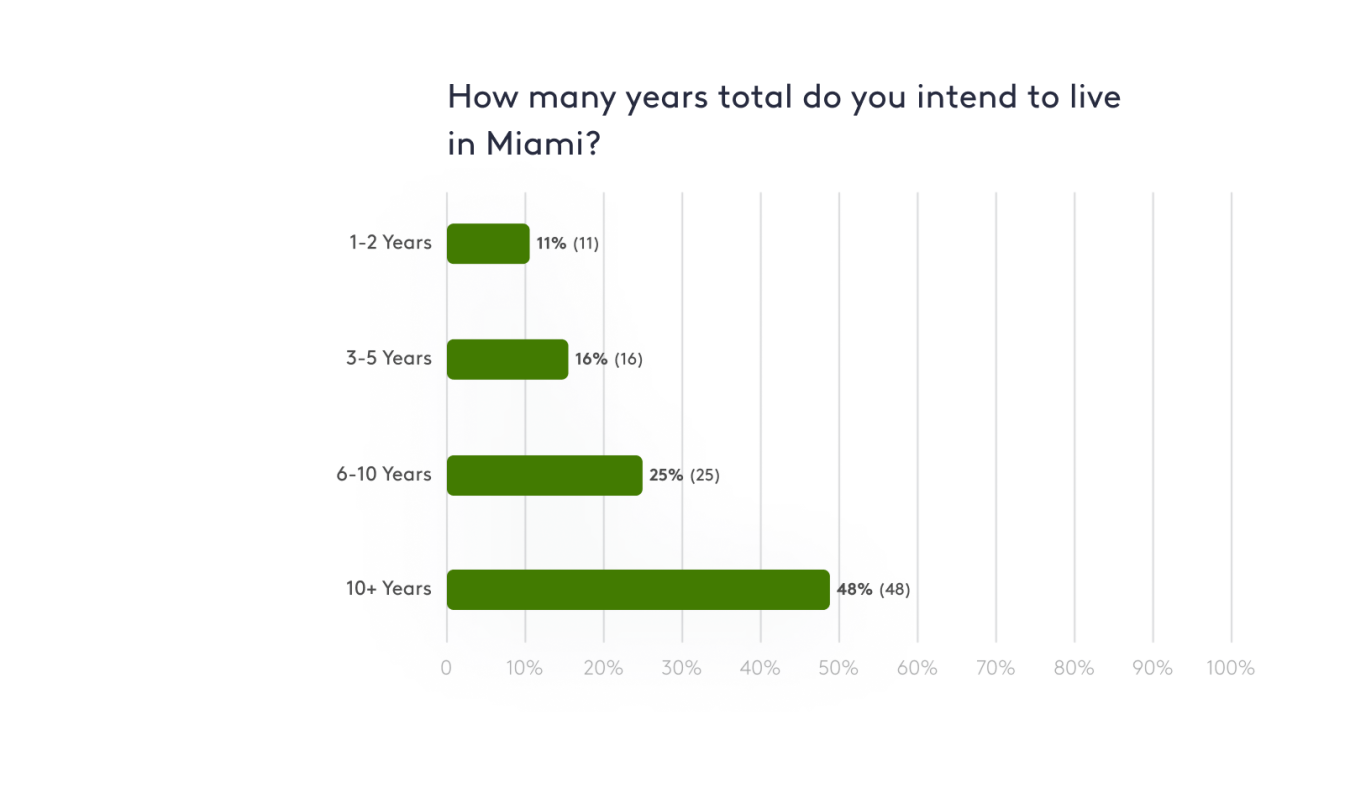
As seen above, 48% of residents surveyed report that they intend to stay in Miami for ten or more years. In a city so alive with opportunity, we're not surprised. However, if you’re considering finding an apartment in the Magic City, local recommendations only go so far. You can take their word for it, but you may not believe the full extent of what this city offers until you experience it yourself.
So come down south and experience Miami in person. Dance through a day of music festivals, or shop, sip and stroll through the city. Stay for a day, a week, or maybe a lifetime. Just remember, once you visit, you may not want to leave.


